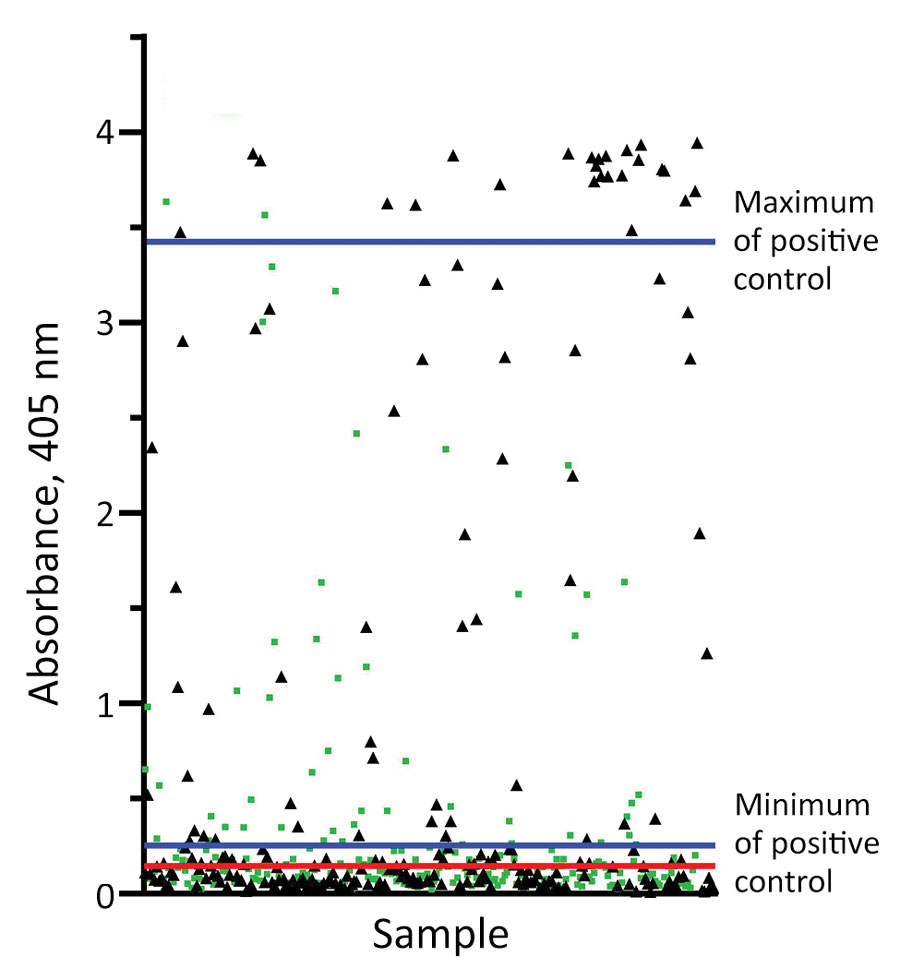Volume 27, Number 12—December 2021
Research
Potential Use for Serosurveillance of Feral Swine to Map Risk for Anthrax Exposure, Texas, USA
Figure 2

Figure 2. Sample absorbance values measured by ELISA at 405 nm for 478 feral swine serum samples collected from defined endemic and nonendemic regions of Texas, USA. The red cutoff line represents the calculated assay cutoff between seropositive and seronegative animals (e.g., +3 SD above the mean of the negative control), equal to 0.15 absorbance units. Blue lines delineate the absorbance unit range of the positive assay control. Black triangles represent samples taken in endemic counties; green boxes represent samples taken in nonendemic counties.
Page created: October 06, 2021
Page updated: November 19, 2021
Page reviewed: November 19, 2021
The conclusions, findings, and opinions expressed by authors contributing to this journal do not necessarily reflect the official position of the U.S. Department of Health and Human Services, the Public Health Service, the Centers for Disease Control and Prevention, or the authors' affiliated institutions. Use of trade names is for identification only and does not imply endorsement by any of the groups named above.